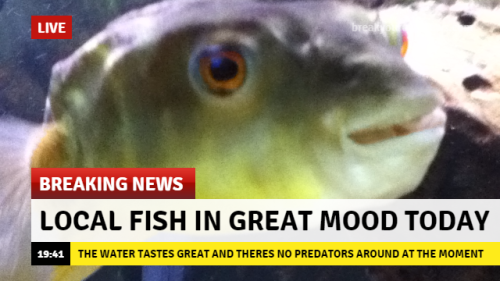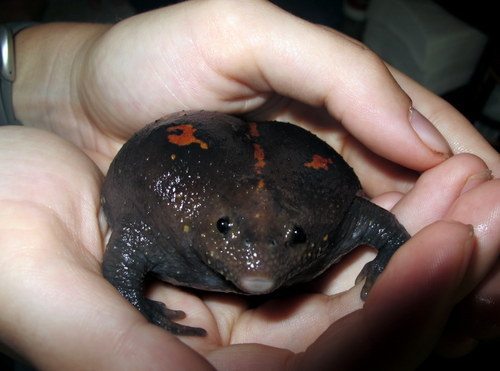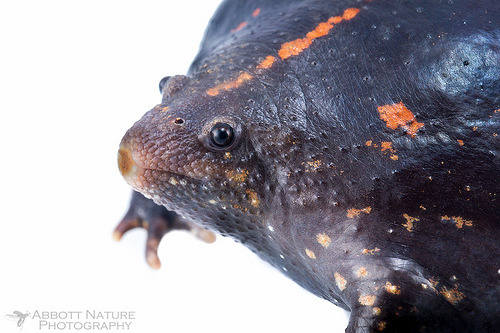A Comic About The Different Joints In The Body

A comic about the different joints in the body
This piece was first posted on Doodlebook.org
More Posts from Llamaslikesciencetoo and Others
First U.S. Climate Refugees Forced to Leave Their Vanishing Island Home
Isle de Jean Charles in Louisiana is vanishing into the sea and its residents must relocate.

The U.S. Department of Housing and Urban Development (HUD) awarded $48 million to the Biloxi-Chitimacha-Choctaw tribe who lives on this sinking island 80 miles southwest of New Orleans so that they may reestablish community further north.
Their home — or what was once a 22,000-acre island — has been reduced to a 320-acre strip where only 25 houses remain.

This makes members of the Louisiana tribe the first official climate refugees in the United States as rising sea levels have swallowed 98% of their land.
Find out more in this Huffington Post piece.
(Map via Google Maps. Sinking house photo by Karen Apricot via Flickr.)
Octopus rubescens
San Mateo county CA June 2015 / FZ-200 /
hd button recommended
me, on a date: so what's your opinion on sharks?
them: oh my god they are such cold, heartless MONSTERS and-
me, shoving breadsticks in my purse: sorry but i have to go home, right now, immediately.





Stages of decomposition
Five general stages are used to describe the process of decomposition in vertebrate animals: Fresh, Bloat, Active and Advanced Decay, and Dry/Remains. The general stages of decomposition are coupled with two stages of chemical decomposition: autolysis and putrefaction. These two stages contribute to the chemical process of decomposition, which breaks down the main components of the body.
Fresh
The fresh stage begins immediately after the heart stops beating.[5] Since blood is no longer being pumped through the body it drains to the dependent portions of the body, under gravity, creating an overall bluish-purple discolouration termed livor mortis or, more commonly, lividity. Shortly after death, within three to six hours, the muscular tissues become rigid and incapable of relaxing which is known as rigor mortis. From the moment of death, the body begins losing heat to the surrounding environment, resulting in an overall cooling called algor mortis.
Once the heart stops, chemical changes occur within the body and result in changes in pH, causing cells to lose their structural integrity. The loss of cell structure brings about the release of cellular enzymes capable of initiating the breakdown of surrounding cells and tissues. This process is known as autolysis. Visible changes caused by decomposition are limited during the fresh stage, although autolysis may cause blisters to appear at the surface of the skin.
Oxygen present in the body is quickly depleted by the aerobic organisms found within. This creates an ideal environment for the proliferation of anaerobic organisms. Anaerobic organisms, originating in the gastrointestinal tract and respiratory system, begin to transform carbohydrates, lipids, and proteins, to yield organic acids (propionic acid, lactic acid) and gases (methane, hydrogen sulphide, ammonia). The process of microbial proliferation within a body is referred to as putrefaction and leads to the second stage of decomposition, known as bloat.
Blowflies and flesh flies are the first carrion insects to arrive, and seek a suitable oviposition site.
Bloat
The bloat stage provides the first clear visual sign that microbial proliferation is underway. In this stage, anaerobic metabolism takes place, leading to the accumulation of gases, such as hydrogen sulphide, carbon dioxide, and methane. The accumulation of gases within the bodily cavity causes the distention of the abdomen and gives a cadaver its overall bloated appearance. The gases produced also cause natural liquids and liquefying tissues to become frothy. As the pressure of the gases within the body increases, fluids are forced to escape from natural orifices, such as the nose, mouth, and anus, and enter the surrounding environment. The buildup of pressure combined with the loss of integrity of the skin may also cause the body to rupture.
Intestinal anaerobic bacteria transform haemoglobin into sulfhemoglobin and other colored pigments. The associated gases which accumulate within the body at this time aid in the transport of sulfhemoglobin throughout the body via the circulatory and lymphatic systems, giving the body an overall marbled appearance.
If insects have access, maggots hatch and begin to feed on the body’s tissues. Maggot activity, typically confined to natural orifices and masses under the skin, causes the skin to slip and hair to detach from the skin. Maggot feeding, and the accumulation of gases within the body, eventually leads to post-mortem skin ruptures which will then further allow purging of gases and fluids into the surrounding environment. Ruptures in the skin allow oxygen to re-enter the body and provide more surface area for the development of fly larvae and the activity of aerobic microorganisms. The purging of gases and fluids results in the strong distinctive odours associated with decay.
Active decay
Active decay is characterized by the period of greatest mass loss. This loss occurs as a result of both the voracious feeding of maggots and the purging of decomposition fluids into the surrounding environment. The purged fluids accumulate around the body and create a cadaver decomposition island (CDI). Liquefaction of tissues and disintegration become apparent during this time and strong odours persist. The end of active decay is signaled by the migration of maggots away from the body to pupate.
Advanced decay
Decomposition is largely inhibited during advanced decay due to the loss of readily available cadaveric material. Insect activity is also reduced during this stage. When the carcass is located on soil, the area surrounding it will show evidence of vegetation death. The CDI surrounding the carcass will display an increase in soil carbon and nutrients, such as phosphorus, potassium, calcium, and magnesium; changes in pH; and a significant increase in soil nitrogen.
Dry/remains
During the dry/remains stage, the resurgence of plant growth around the CDI may occur and is a sign that the nutrients present in the surrounding soil have not yet returned to their normal levels. All that remains of the cadaver at this stage is dry skin, cartilage, and bones, which will become dry and bleached if exposed to the elements. If all soft tissue is removed from the cadaver, it is referred to as completely skeletonized, but if only portions of the bones are exposed, it is referred to as partially skeletonised.


Sharks are fucking metal!

Guys, this is not a drill. Antarctic scientists need you to study photos of penguins to help them figure out how climate change is affecting these stumpy little flightless birds.
Scientists from the UK have installed a series of 75 cameras near penguin territories in Antarctica and its surrounding islands to figure out what’s happening with local populations. But with each of those cameras taking hourly photos, they simply can’t get through all the adorable images without your help.
“We can’t do this work on our own,” lead researcher Tom Hart from the University of Oxford told the BBC, “and every penguin that people click on and count on the website - that’s all information that tells us what’s happening at each nest, and what’s happening over time.”
The citizen science project is pretty simple - known as PenguinWatch 2.0, all you need to do is log on, look at photos, and identify adult penguins, chicks, and eggs in each image. Each photo requires just a few clicks to identify, and you can chat about your results in the website’s ‘Discuss’ page with other volunteers.
Continue Reading.
friend of the day!
you’ve met handsome roundboy, now we introducing….
His Royal Flatness, mexican burrowing toad!

SO FLAT! i am swooning

a face of a king

perfect is he body

i trust him

I love him

beautiful smile of toad

he know you love him too!

in he come for a kiss!

thank you goodbye!!
Is Ransom Okay I Heard A Coral Reef Died

A starfish walking back to the water.
-
 bugsupport liked this · 6 years ago
bugsupport liked this · 6 years ago -
 lexx-studies reblogged this · 6 years ago
lexx-studies reblogged this · 6 years ago -
 lexx-studies liked this · 6 years ago
lexx-studies liked this · 6 years ago -
 survboards liked this · 6 years ago
survboards liked this · 6 years ago -
 jovialbouquetpiratesblog liked this · 7 years ago
jovialbouquetpiratesblog liked this · 7 years ago -
 absentpsyche liked this · 7 years ago
absentpsyche liked this · 7 years ago -
 mollitiamxo liked this · 7 years ago
mollitiamxo liked this · 7 years ago -
 kin-study reblogged this · 7 years ago
kin-study reblogged this · 7 years ago -
 karlaortga liked this · 8 years ago
karlaortga liked this · 8 years ago -
 neutralcaife liked this · 8 years ago
neutralcaife liked this · 8 years ago -
 eggcellent-kebab liked this · 8 years ago
eggcellent-kebab liked this · 8 years ago -
 1darkflame7 liked this · 8 years ago
1darkflame7 liked this · 8 years ago -
 badshah-cornelius reblogged this · 8 years ago
badshah-cornelius reblogged this · 8 years ago -
 storiesofourlives reblogged this · 8 years ago
storiesofourlives reblogged this · 8 years ago -
 griffonderful reblogged this · 8 years ago
griffonderful reblogged this · 8 years ago -
 micromac liked this · 8 years ago
micromac liked this · 8 years ago -
 krissiel-blog1 reblogged this · 9 years ago
krissiel-blog1 reblogged this · 9 years ago -
 heartstringsandgrassroots reblogged this · 9 years ago
heartstringsandgrassroots reblogged this · 9 years ago -
 heartstringsandgrassroots liked this · 9 years ago
heartstringsandgrassroots liked this · 9 years ago -
 fuckyouimachameleon reblogged this · 9 years ago
fuckyouimachameleon reblogged this · 9 years ago -
 phiastudyblr reblogged this · 9 years ago
phiastudyblr reblogged this · 9 years ago -
 munkeepants liked this · 9 years ago
munkeepants liked this · 9 years ago -
 yuper123 liked this · 9 years ago
yuper123 liked this · 9 years ago -
 llamaslikesciencetoo reblogged this · 9 years ago
llamaslikesciencetoo reblogged this · 9 years ago -
 onehippocampus liked this · 9 years ago
onehippocampus liked this · 9 years ago -
 kingfishersays reblogged this · 9 years ago
kingfishersays reblogged this · 9 years ago -
 asyraafcomelgilossss liked this · 9 years ago
asyraafcomelgilossss liked this · 9 years ago -
 shoeless-savage reblogged this · 9 years ago
shoeless-savage reblogged this · 9 years ago -
 shoeless-savage liked this · 9 years ago
shoeless-savage liked this · 9 years ago -
 twobirdlegs liked this · 9 years ago
twobirdlegs liked this · 9 years ago -
 twobirdlegs reblogged this · 9 years ago
twobirdlegs reblogged this · 9 years ago -
 drelmahdy reblogged this · 9 years ago
drelmahdy reblogged this · 9 years ago -
 asliena liked this · 9 years ago
asliena liked this · 9 years ago -
 be-the-bravest liked this · 9 years ago
be-the-bravest liked this · 9 years ago -
 zanyexpertkitten reblogged this · 9 years ago
zanyexpertkitten reblogged this · 9 years ago -
 zanyexpertkitten liked this · 9 years ago
zanyexpertkitten liked this · 9 years ago -
 llamafollower liked this · 9 years ago
llamafollower liked this · 9 years ago -
 silkarth liked this · 9 years ago
silkarth liked this · 9 years ago
Mainly interested in ecology, but also the entirety of science.
179 posts